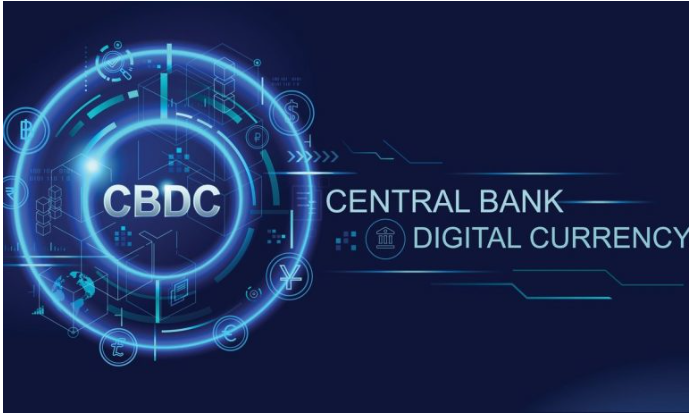How Central Bank Digital Currencies (CBDCs) Could Shape the Future
The world of money is undergoing a major transformation and Central Bank Digital Currencies (CBDCs) are at the heart of it.
As cryptocurrencies like Bitcoin and Ethereum gain traction, central banks are exploring digital currencies of their own. Over 130 countries are researching or piloting CBDCs in 2025, signaling a new era of state-backed digital money.
But what exactly is a CBDC? How does it differ from crypto? And what impact could it have on banking, payments, privacy, and monetary policy?
In this post, we’ll break down what CBDCs are, how they work, and how they could reshape the global financial system.
What Is a Central Bank Digital Currency (CBDC)?
A CBDC is a digital version of a country’s national currency, issued and regulated by its central bank.
Unlike cryptocurrencies such as Bitcoin which are decentralized and volatile CBDCs are:
-
Centralized
-
Backed by a government
-
Stable and pegged to a nation’s fiat currency (like the dollar, euro, or yuan)
In short, CBDCs are digital cash offering the benefits of blockchain technology with the trust and backing of central banks.
How Do CBDCs Work?
There are two main types of CBDCs:
1. Retail CBDC
-
Designed for everyday use by the public
-
Acts like digital cash for individuals and businesses
-
Could be stored in a digital wallet on a smartphone
-
Example: Buy coffee using CBDC instead of physical currency
2. Wholesale CBDC
-
Used by financial institutions and banks
-
Improves interbank transactions, settlements, and cross-border payments
-
Not meant for consumer use
CBDCs may use blockchain or other forms of distributed ledger technology (DLT), but they can also be built on centralized systems depending on the country’s design.
Countries Leading the Way
Several nations are already piloting or launching CBDCs:
-
🇨🇳 China – Digital Yuan (e-CNY):
In advanced pilot stages across cities and apps like WeChat Pay. -
🇳🇬 Nigeria – eNaira:
One of the first fully launched CBDCs in Africa, facing adoption challenges. -
🇧🇸 The Bahamas – Sand Dollar:
The world’s first official CBDC, launched in 2020. -
🇪🇺 European Union – Digital Euro:
In development phase, with a possible rollout expected by 2026. -
🇺🇸 United States – FedNow and Research:
The Fed has launched real-time payment infrastructure (FedNow), while studying the potential of a digital dollar.
How CBDCs Differ from Crypto
| Feature | CBDCs | Cryptocurrencies |
|---|---|---|
| Issued By | Central banks | Decentralized networks |
| Backing | National currency | Market-driven, no backing |
| Stability | Stable (pegged to fiat) | Volatile |
| Legal Status | Legal tender | Varies by country |
| Privacy | Potentially limited | Pseudonymous or private |
While both are digital, the philosophy and structure behind CBDCs and crypto are fundamentally different.
How CBDCs Could Shape the Future
1. Faster, Cheaper Payments
CBDCs could eliminate intermediaries and reduce costs in domestic and cross-border transactions, benefiting both consumers and businesses.
2. Financial Inclusion
With smartphone access, unbanked populations in developing regions could gain access to secure, government-backed digital money.
3. Real-Time Monetary Policy
Governments could implement programmable money adjusting interest rates, providing stimulus, or tracking spending in real time.
4. Reduced Cash Dependency
CBDCs may eventually reduce reliance on physical money, making economies more efficient and secure.
5. Global Currency Competition
CBDCs could spark competition among national currencies on a global scale especially between major players like the U.S., China, and the EU.
Risks and Concerns
While CBDCs offer promise, they also raise critical concerns:
-
Privacy and surveillance:
Governments could track transactions, raising fears about financial privacy. -
Banking disruption:
Direct CBDC wallets might reduce the role of commercial banks, affecting lending and savings systems. -
Cybersecurity risks:
As digital infrastructure becomes central to money, it becomes a target for cyberattacks. -
Geopolitical power shifts:
Nations with early CBDC success may influence global finance and reduce dependency on the U.S. dollar.
Final Thoughts
CBDCs are not just a trend they’re a fundamental evolution of money.
As governments work to balance innovation with control, CBDCs could redefine how we pay, save, and interact with our financial systems.
Whether they enhance financial freedom or increase surveillance will depend on how they’re designed and governed.


